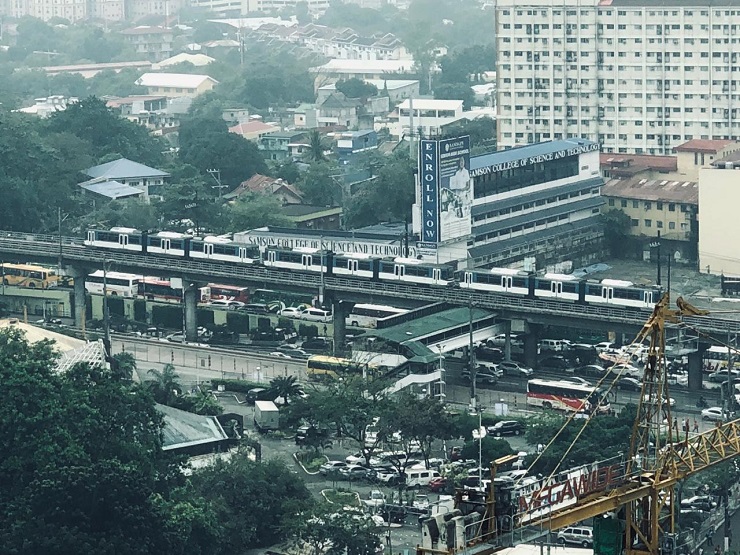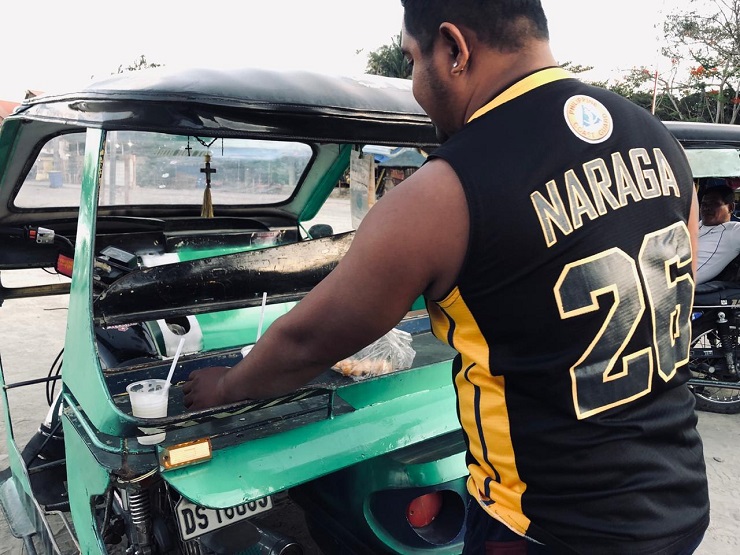It is mad, it is insane, but to get from point A to point B in Bangkok or Jakarta can easily take 2 or 3 hours. Often, the traffic comes to a total gridlock. The air quality is now one of the worst on earth. Periodically, life comes to a standstill. On average, people spend years of their lives sitting in traffic jams.
Some couples have stopped dating, relying on their mobile phone chats instead. Increasingly, food is getting delivered. While businesses are profiting, the lives of many ordinary people are collapsing. This is not what urban life used to be!
Citizens are angry, some are resigned, but the consensus is – there is absolutely nothing they can do to reverse the trend. Their cities were literally stolen from them, in front of their noses. Everything has been privatized, and corruption had spread its ugly grope. City planning was abandoned, or, on many occasions, the city planners got bought up by the very same companies which are determinedly ruining the cities.
The sight is horrifying: uninterrupted rivers of cars and scooters blocking the arteries of Bangkok, Jakarta and Manila. Thick smog. Noise pollution.
As ‘social life’ is mainly concentrated around huge shopping malls, and lately there are not many stand-alone services along the roads. Only a few people walk. In the case of Jakarta, there are hardly any decent sidewalks in the city, and even if there are a few, they are commonly being monopolized by aggressive scooters and ruthless street vendors. Is it illegal? Who cares: laws are hardly ever imposed.
In Bangkok, connectivity has totally collapsed. Private condominiums, private houses, private businesses, fragmented neighborhoods. Often, to commute between two places that are barely 50 meters from each other as the crow flies, may take kilometers, because one has to first reach a major avenue, and then return using or driving on the parallel lane.
There are some rules and regulations in existence, but they can be violated easily, if a developer is willing to pay substantial bribes. The public is totally defenseless. The system is designed the way that big businesses or the governments subservient to those big businesses, always win. To complain is simply a waste of time, and in some cases may even be dangerous. The system is watching, it is monitoring, and can get extremely vindictive if it feels that business interests are getting threatened.
***
So, what really happened to such places like Bangkok?
And, no need to ask about Jakarta, Bandung or Surabaya. In Indonesia, after the 1965 US-led coup, big business and foreign multi-nationals, consumed the entire country, leaving just a carcass of what it used to be during the socialist, progressive era of President Sukarno and his close ally PKI (Indonesian Communist Party). In Indonesia, cities have some of the smallest green areas as a percentage of their territory, in the world. They all have a grotesque lack of public walkways (sidewalks), and the “privatized city planning”; means that cities are growing in order to satisfy the profits of corporations, developers, and the rich corrupt individuals. The interests of the public are ignored, brutally.
But Bangkok or Manila?
Bangkok is “the most visited city in the world”. It is home to some architectural monuments, cultural treasures and exotic waterways. But it is also where the turbo-capitalist system rules, and where corruption has reached unimaginable heights.
In the legendary BACC (Bangkok Art & Culture Centre), there used to be an ‘artwork’ hanging near the entrance: a map of the future public transportation network of the city, as envisioned by some enthusiastic city-planners. Tens of metro and elevated rail lines were shown, connecting all corners of the city, same as they do in real life in Beijing, Guangzhou or Tokyo. Above the map, in big letters, it declared: “If there is no corruption”.
The map quietly disappeared, a couple of years ago.
But there is corruption. Enormous, monstrous, and it often appears, unstoppable.
And so, Bangkok, a megapolis with approximately 8.5 million inhabitants (14 million including the suburbs) has only two functioning metro lines, two elevated (BTS) lines, and one airport link line. Several lines have been delayed and delayed and delayed. And this so-called public transportation is actually not public at all. It is brutally pro-profit, with an average ride reaching US$1.5 per leg, with no monthly passes and no free transfers between the underground lines and elevated lines (operated by different companies) or between rail lines and buses. The bus network is cheaper, but badly coordinated and inadequate. To take a bus is the same as driving a car – one sits in endless traffic jams. As a result, almost everyone drives; something, a car or even a dangerous and polluting scooter.
And if you think that Bangkok is bad, go to any other Thai city, even those with more than a million inhabitants, like Chiang Mai or Hat Yai. No public transportation; nothing, nothing at all.
Why? There are many answers. One obvious one is: Thailand is where millions of cars get assembled, annually. It is such a big business, so much money is made, that the interests of the Thai people comes second. Or third. Or they are not mentioned at all.
Regarding Southeast Asian traffic jams, as early as in 2012, even the BBC warned:
“Bangkok’s traffic problem has been getting worse since the government introduced a policy to refund tax for first-time car buyers.
Coupled with the Thai aspiration to own a car and get some status, this policy has resulted in five million vehicles in a city which can only cope with less than two million cars.”
“Indonesians living in Jakarta have their own word for traffic jam – the inevitable “macet”. Your life is planned around the traffic jams which often continue through the day. Travelling even short distances can take hours and some parts of the city are in a constant state of jam.”
Since then, things have got much worse, and not only in the Southeast Asian capitals. Now cities like Surabaya or Bandung (both with over 2 million inhabitants) are also locked in constant traffic jams, and there are no public transportation networks being constructed there, as well as almost no sidewalks. Secondary Malaysian cities have been planning, for decades, new modes of people movers, from light rail to monorails. All of them failed to materialize, and some of them, like in the city of Malacca, have literally collapsed.
Naturally, the BBC is not drawing any political conclusions, but it should be. Not building public transportation networks, or building inadequate ones, is a political choice. It only serves extreme capitalism, and it forces people to purchase private cars or at least scooters.
While the ownership of cars is hailed as progress, in reality it is yet another symbol of under-development in places like Indonesia where the majority of people live in poverty, or in Thailand, where US$300 per month is already considered a legitimate income, and where, according to The Bangkok Post, people live in a country with one of the greatest income disparities in the world.
***
According to IQAir Air Visual, in 2018, Indonesia was 11th ranked of the most polluted countries in the world. Thailand held 23rd place, and the Philippines 48th. Singapore, perhaps the most ecological country in the world, became the 47th most polluted, simply because of the horrible smog which regularly travels towards its shores; smog from the unbridled burning of Indonesian forests, on islands such as Kalimantan (Borneo) and Sumatra.
On August 8, 2019, an official Indonesian English language newspaper, The Jakarta Post, had to admit:
“The poor air quality of Indonesia’s capital city is back in the spotlight as air quality monitor Airvisual determined that Jakarta ranks as the city with worst air pollution in the world on Thursday afternoon.”
***
A few years back, in 2016, Coconuts Bangkok wrote:
“We already knew that the traffic is one of the worst things about Bangkok — and now a study has confirmed that the city has worse traffic jams than any other place in the world apart from Mexico City.
Drivers in Bangkok spend on average 57 per cent extra travel time stuck in traffic at any time of the day, according to the TomTom Traffic Index 2016, which takes data from last year.
It gets worse in the mornings, when Bangkok drivers spend up to 85 per cent extra time in traffic, while in the evening peak period that slows even further to 114 per cent.”
Since then, the traffic situation in Mexico City has improved, while in Bangkok, it has degenerated even further.
In 2017, the Thai English language daily – The Nation – reported:
“The survey ranked Bangkok as the worst for traffic congestion among countries in Southeast Asia, followed by Jakarta, Manila, Kuala Lumpur… Traffic jams in Asean’s city roads cost 2 per cent to 5 per cent of gross domestic product (GDP) per year in each of the countries taking into account the time wasted as well as its impact on the cost of transport. Moreover, about 80 per cent of air pollution in Asia was caused by road transport.”
When it comes to traffic jams and pollution, an “unpopular” topic in the mainstream media is health: what impact has air pollution on human health? What effect does sitting in those endless traffic jams have on the human body?
According to the prestigious UK-based medical magazine The Lancet:
“Air pollution caused 6% of total mortality or more than 40,000 attributable cases per year. About half of all mortality caused by air pollution was attributed to motorised traffic, accounting also for: more than 25,000 new cases of chronic bronchitis (adults); more than 290,000 episodes of bronchitis (children); more than 0·5 million asthma attacks; and more than 16 million person-days of restricted activities.”
I asked several Indonesian doctors, and their reply was the most cynical one, one could imagine:
“Pollution and being locked in traffic jams has no direct negative impact on human health.”
In Southeast Asia, academia, doctors and journalists very rarely go against business interests.
Is it all worth it? It appears that the grotesquely extreme capitalist societies of Southeast Asia are sacrificing millions of lives just in order to maximize profits, without even blinking an eye. It is definitely worth it for the rulers, not for the subjects.
Mostly, people living in Southeast Asia are suffering in silence. The majority of them do not even know that another world is possible. Excellent and ecological public transportation systems are reserved only for the very rich countries in Europe, Australia, Canada, Japan, Singapore, or for the Communist countries such as China and North Korea. In most other countries, common people matter very little, or nothing.
Andre Vltchek is philosopher, novelist, filmmaker and investigative journalist. He’s a creator of Vltchek’s World in Word and Images, and a writer that penned a number of books, including China’s Belt and Road Initiative: Connecting Countries Saving Millions of Lives. He writes especially for the online magazine “New Eastern Outlook.”


